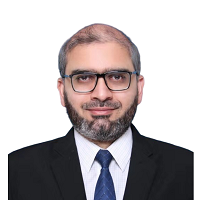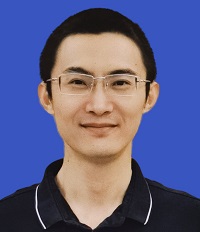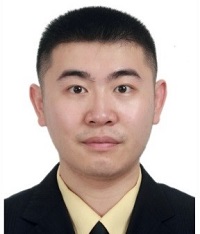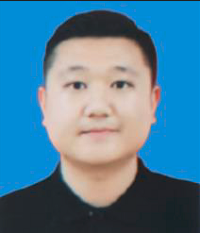CECSP 2024- Conference Invited Speakers
Prof. Suleman Mazhar, Harbin Engineering University, China Suleman Mazhar is working as professor in Information & Communication Engineering Program at Harbin Engineering University, China since July 2019. He did PhD from Tokyo University (Japan) and post-doctorate from Georgetown University (Washington DC, USA). He is TYSP young scientist fellow (Ministry of Science & Technology China) and have won several research grants from international organizations (such as DAAD, ICIMOD, HEC-Pakistan, WWF-Pakistan). His research focus is deep learning and signal processing applications for environmental monitoring, with particular focus on underwater acoustics, robotics and marine mammal monitoring. Speech Title: AUTOMATED D-SCORE ESTIMATION OF ENDOMETRIAL HYPERPLASIA USING MACHINE LEARNING AND IMAGE PROCESSING Abstract: Endometrial hyperplasia is an abnormal overgrowth of inner “endometrium” layer of uterus which can be precursor of endometrial cancer. Endometrial hyperplasia has been a diagnostic problem for pathologist because of unreliable, non-reproducible results of subjective grading classification systems. It is observed in previous studies that 10-36% endometrial hyperplasia progressed to endometrial carcinoma when it is left untreated. D-score is multivariate quantitative formula for the assessment of endometrial hyperplasia. It comprises three features volume percentage of stroma, standard deviation of shortest nucleus axis and outer surface density of glands. DScore=0.66229+(0.0439×VPS)-[3.9934 ×Ln(SDSNA)]-(0.1529×outSD). It is observed in previous studies that D-score assessment is more reproducible method than other existing qualitative classification methods with strong prognostic value as it combines the quantitative, architectural and nuclear criteria. Existing Computerized morphometrical D-Score assessment is semi-automatic and requires support of an expert technician for assessment of D-Score, requiring an effort of around 30 minutes on average. This talk will present a computerized morphometrical D-Score estimation using a modified nuclei detection approach to address the problem of segmentation of glandular region in colon histology images; The work uses multi category classifier for extraction of posterior probability of nuclei and subsequent nuclei structures in endometrial hyperplasia. Computerized morphological analysis is performed on extracted glandular and nuclei structures for calculation of volume percentage of stroma, outer surface density of gland and standard deviation of shortest nuclei axis. D-score estimates from the proposed method match 94% prognostic decision of manually evaluated D-score by experts.
Speaker I

He is the chair TC-Underwater Acoustics (IEEE-OES), chair Student Activities Committee (IEEE-OES), chair OES-SOI Berth of Opportunity Program and reviewer for professional journals such as Journal of Acoustical Society (America), IEEE Journal of Oceanic Engineering, IEEE Sensors Journal, Applied Acoustics, IEEE Transactions on Intelligent Transportation Systems etc.
| Speaker II |
Prof. Shuwen Xu, Xidian University, China Shuwen Xu (IEEE Senior Member) was born in Huangshan city in Anhui, China. He received the B.Eng. and Ph.D. degrees, both in electronic engineering, from Xidian University, Xi’an, China, in 2006 and 2011, respectively. He worked at the National Laboratory of Radar Signal Processing, Xidian University, after that. He worked as a visiting professor in Mcmaster University in 2017 and 2018, Canada. He is currently a professor and vice director with the National Laboratory of Radar Signal Processing, Xidian University. He is also the vice director of National Collaborative Innovation Center of Information Sensing and Understanding and the Director of radar signal processing and data processing Department. His research interests are in the fields of radar target detection, statistical Learning, and SAR image processing. Speech Title: Optimum and Near-optimum Coherent CFAR Detection of Radar Targets in Compound-Gaussian Sea Clutter Abstract: In this lecture, we propose optimum and near-optimum adaptive coherent detectors of radar targets in compound-Gaussian clutter with generalized inverse Gaussian texture. The target amplitude and the speckle covariance matrix are modeled as unknown quantities to be estimated. On the basis of the two-step generalized likelihood ratio test (GLRT) and the estimate of the speckle covariance matrix, the optimum coherent detector and its adaptive version are designed. It is demonstrated that the proposed optimum coherent detector contains three common detectors, which are the optimum K detector (OKD), the generalized likelihood ratio test linear-threshold detector (GLRT-LTD), and the generalized likelihood ratio test detector for compound-Gaussian clutter with inverse Gaussian texture (GLRT-IG). The proposed near-optimum coherent detector contains two common detectors, the GLRT-LTD and the alpha-MF detector in K-distributed clutter, and has a comparable detection performance of the near-optimum detector in CG-IG clutter which was proposed before. Theoretical analysis and numerical experiments illustrate that the proposed two detectors for CG-GIG clutter have the constant false alarm ratio (CFAR) property relative to the estimate of the speckle covariance matrix and Doppler steering vector. Moreover, the detection performance of the two coherent detectors are evaluated by the simulated and real data. |
| Speaker III |
Assoc. Prof. Jiahua Zhu, National University of Defense Technology, Changsha, China Jiahua Zhu received the B.S. degree in electronic engineering and Ph.D. degrees in information and communication engineering from the National University of Defense Technology, Changsha, China, in 2012 and 2018, respectively. He is currently an associate professor and master supervisor with the College of Meteorology and Oceanography, National University of Defense Technology. From November 2015 to November 2017, he was a visiting Ph.D. student with the School of Engineering, RMIT University, and the Department of Electrical and Electronic Engineering, University of Melbourne, Australia. His current research interests include waveform design and target detection for radar and sonar. He received the Best Paper Award in The 9th Research Symposium for Chinese PhD Students and Scholars in Australia, 2016, the Excellent Paper Award in 2021 IEEE/OES China Ocean Acoustics Conference, and the outstanding Ph.D. degree thesis of the Chinese People’s Liberation Army (PLA), 2020. He is an Editorial Board Member of IET Signal Processing, a Program Co-Chair and Regional Chair of IEEE International Conference on Signal and Image Processing (ICSIP), a Topical Advisory Panel Member and the Lead Guest Editor of REMOTE SENSING, the Guest Editor of IEEE JOURNAL OF SELECTED TOPICS IN APPLIED EARTH OBSERVATIONS AND REMOTE SENSING. He is a SENIOR MEMBER of IEEE. Speech Title: Achievements and Directions Review of Complementary Waveforms for Moving Target Detection Abstract: As a novel waveform diversity scheme, complementary waveforms show their attractive quality with free of sidelobe in theory, which is potential in effective target detection under various scenarios. In this speech, we will introduce the definition and problem of complementary waveforms, and a series of approaches are reviewed for moving target detection in terms of better performance on sidelobe suppression and Doppler enhancement. |
| Speaker IV |
Dr. Nan Jiang, Central South University, China Nan Jiang received the B.S. and M.S. degree from University of Electronic Science and Technology of China, Chengdu, in 2016 and 2019, respectively, and received Ph.D. degree in Information and Communication Engineering from National University of Defense Technology, Changsha, China, in 2023. From 2018 to 2019, he was a visiting master student with the Department of Engineering, University of Leicester, U.K. He is currently a Lecturer with the School of Automation, Central South University. His research interests include SAR imaging, radar signal processing, and compressed sensing. Speech Title: High frame rate along-track swarm SAR imaging based on sparse constrains Abstract: In the case of long aperture, the data acquisition time of traditional Monostatic SAR is prolonged, resulting in a low sampling frame rate and inefficient data acquisition. Therefore, this lecture designs a high frame rate Along-Track Swarm SAR (ATS-SAR) system in the single-input-multiple-output configuration, aiming to significantly improve the data recording efficiency while achieving high quality ATS-SAR cooperative imaging. The platforms of ATS-SAR are sparsely placed, and different sub-platforms simultaneously receive the echo data of sub-apertures at different positions. Thus, the sub-apertures form a long aperture in a short time. This study delves into various aspects of ATS-SAR, including system configuration design, echo modeling, and sub-apertures cooperative imaging. An effective ATS-SAR cooperative imaging technical solution is established based on sparse target priors. The proposed solution can be widely applied to different imaging scenarios. |






